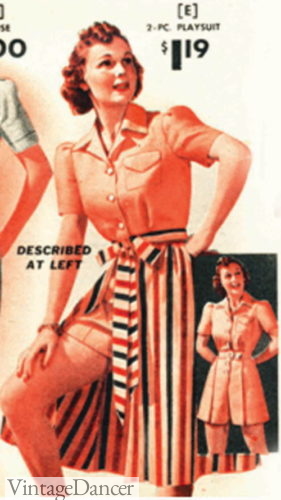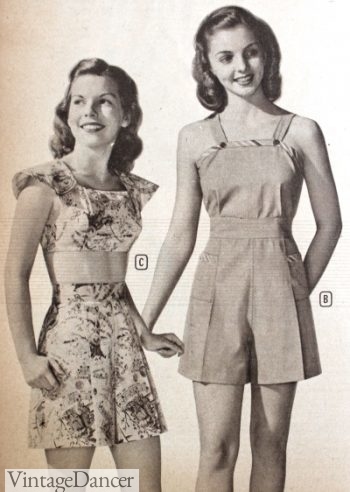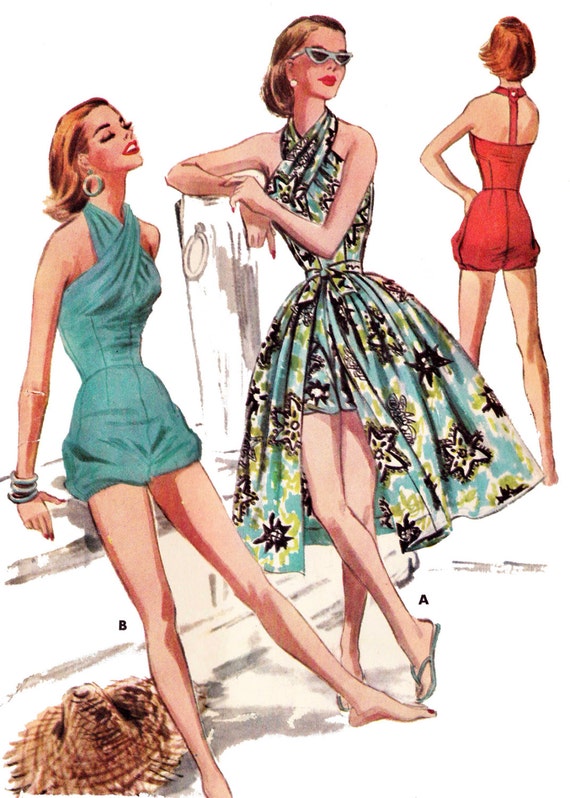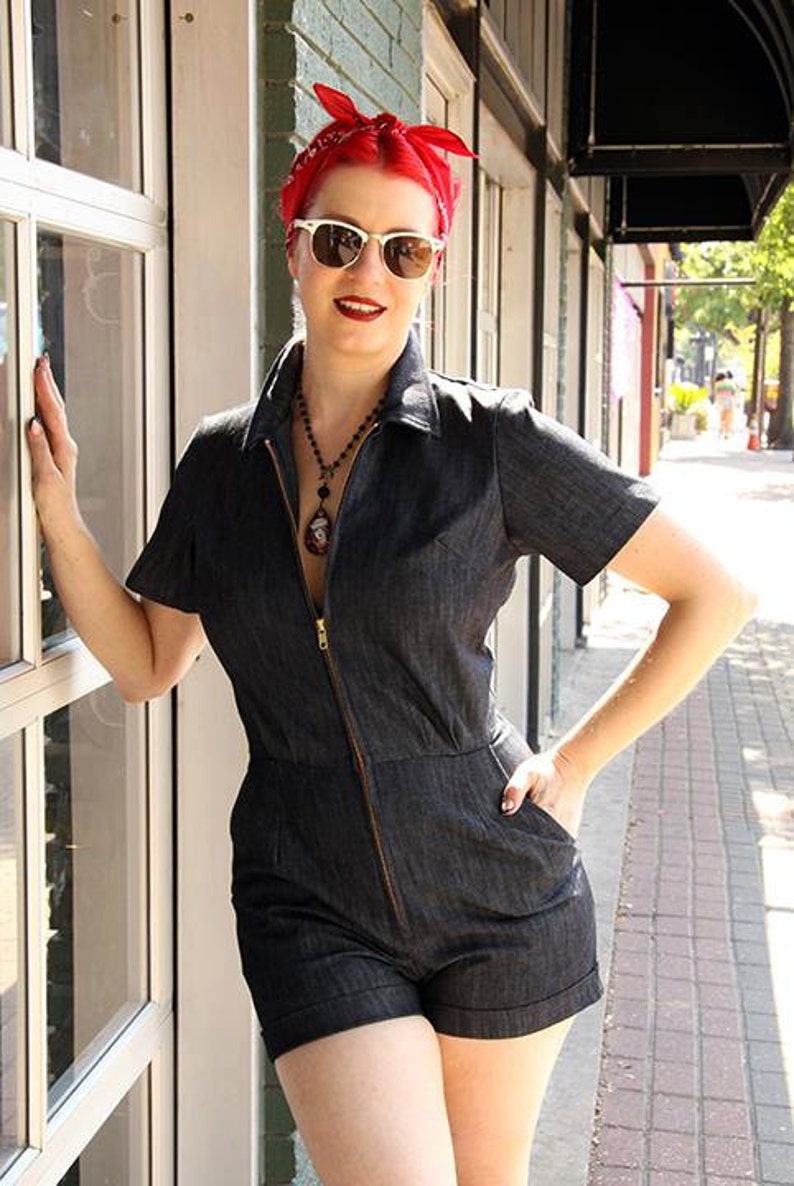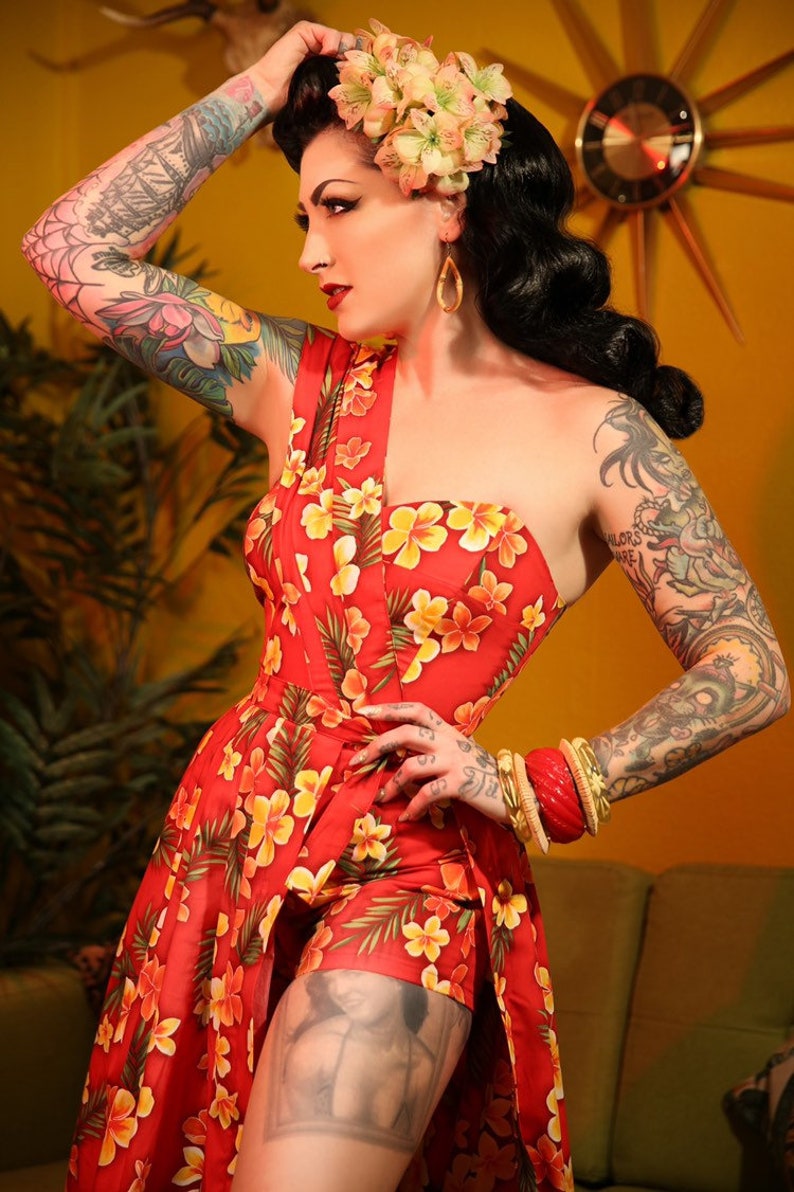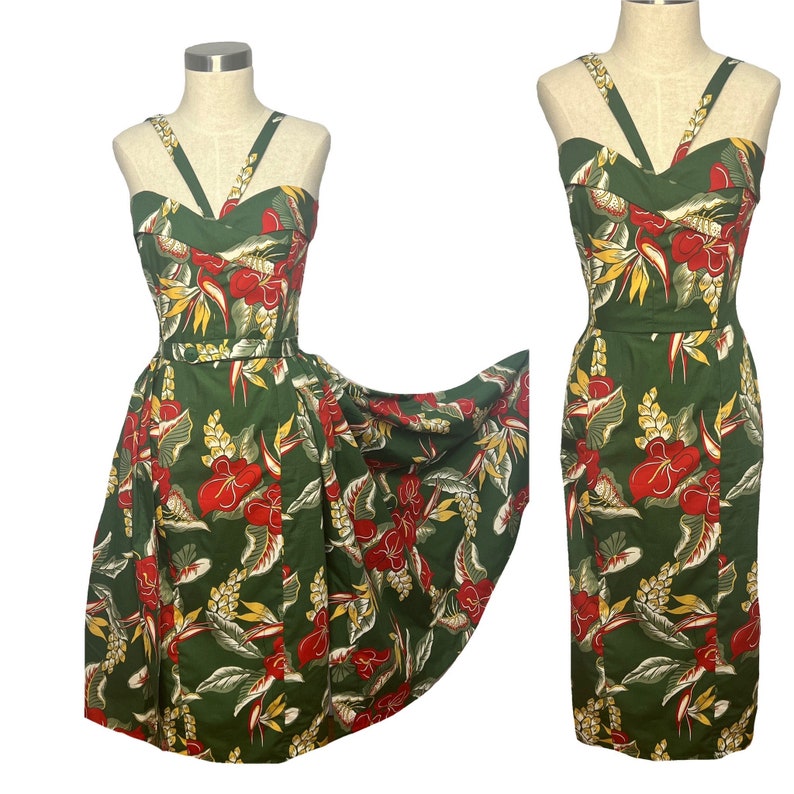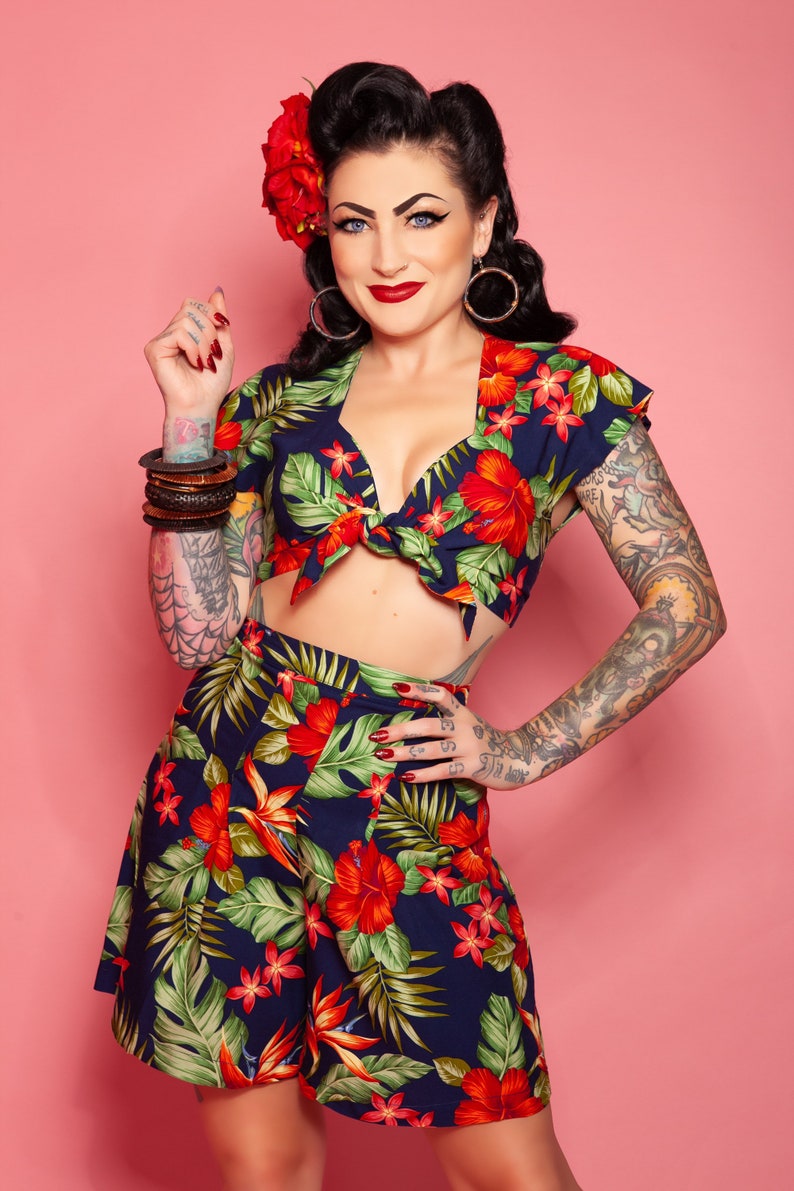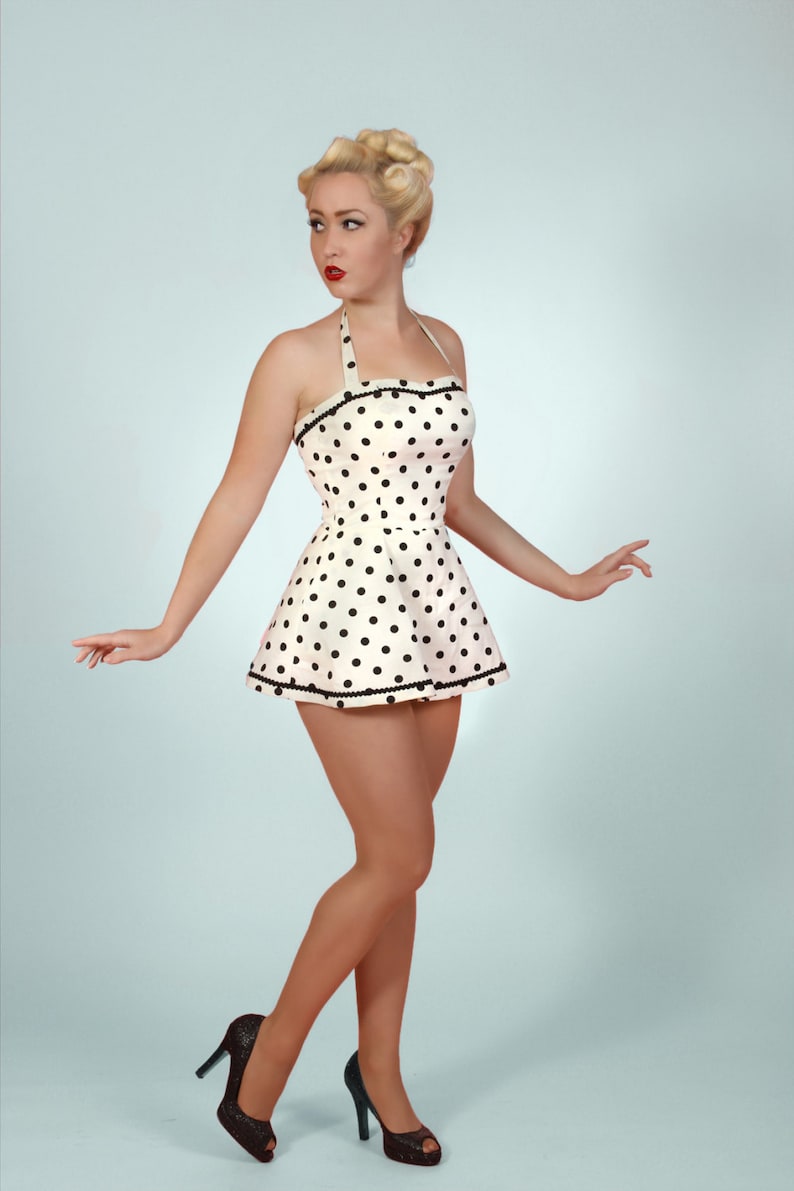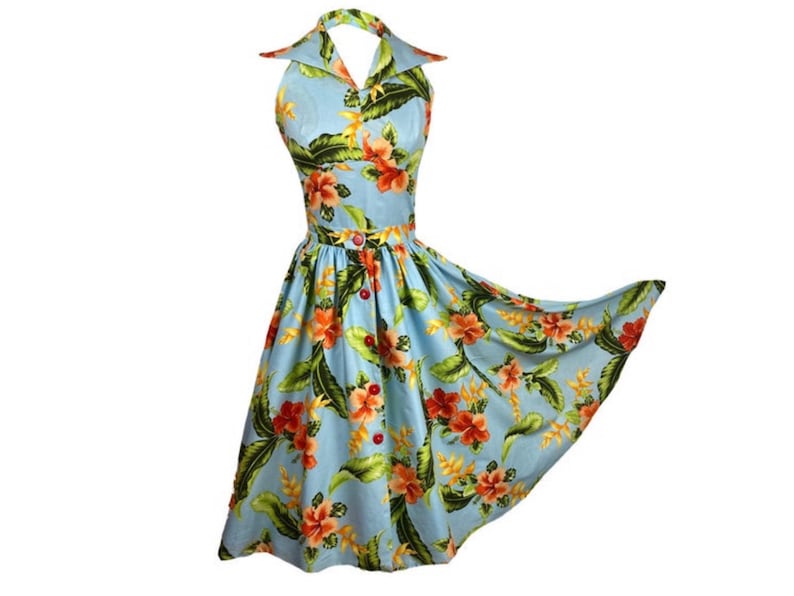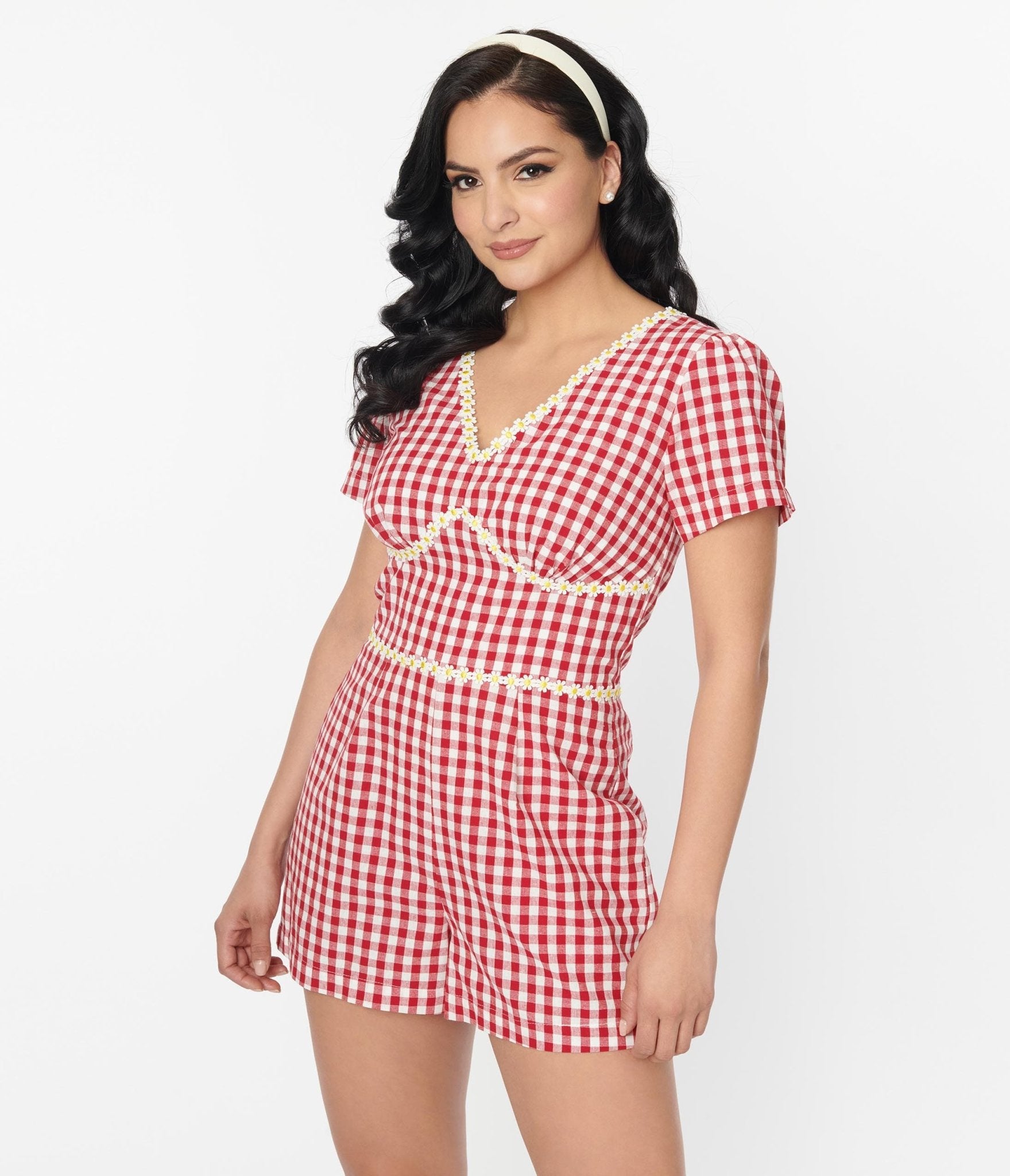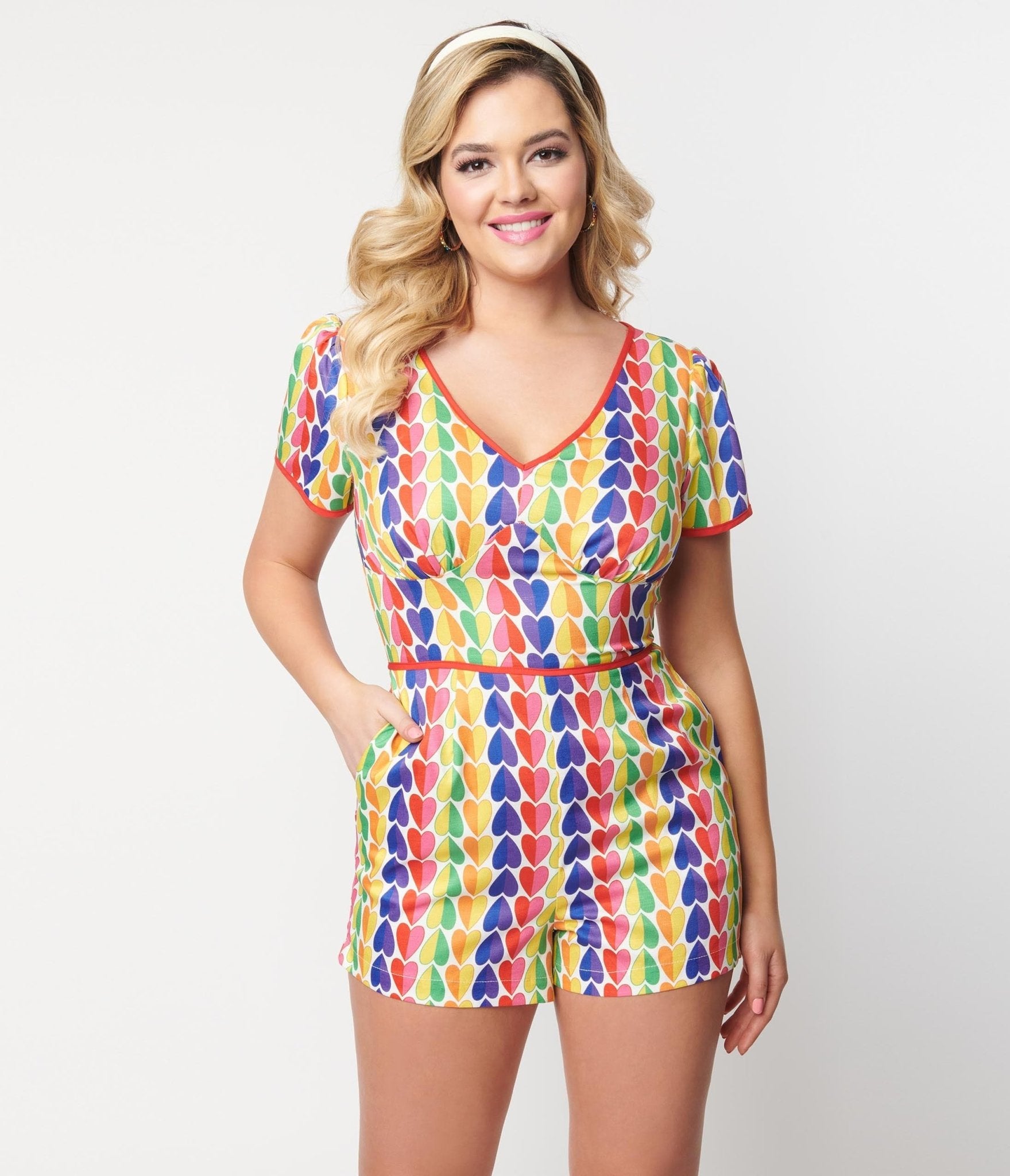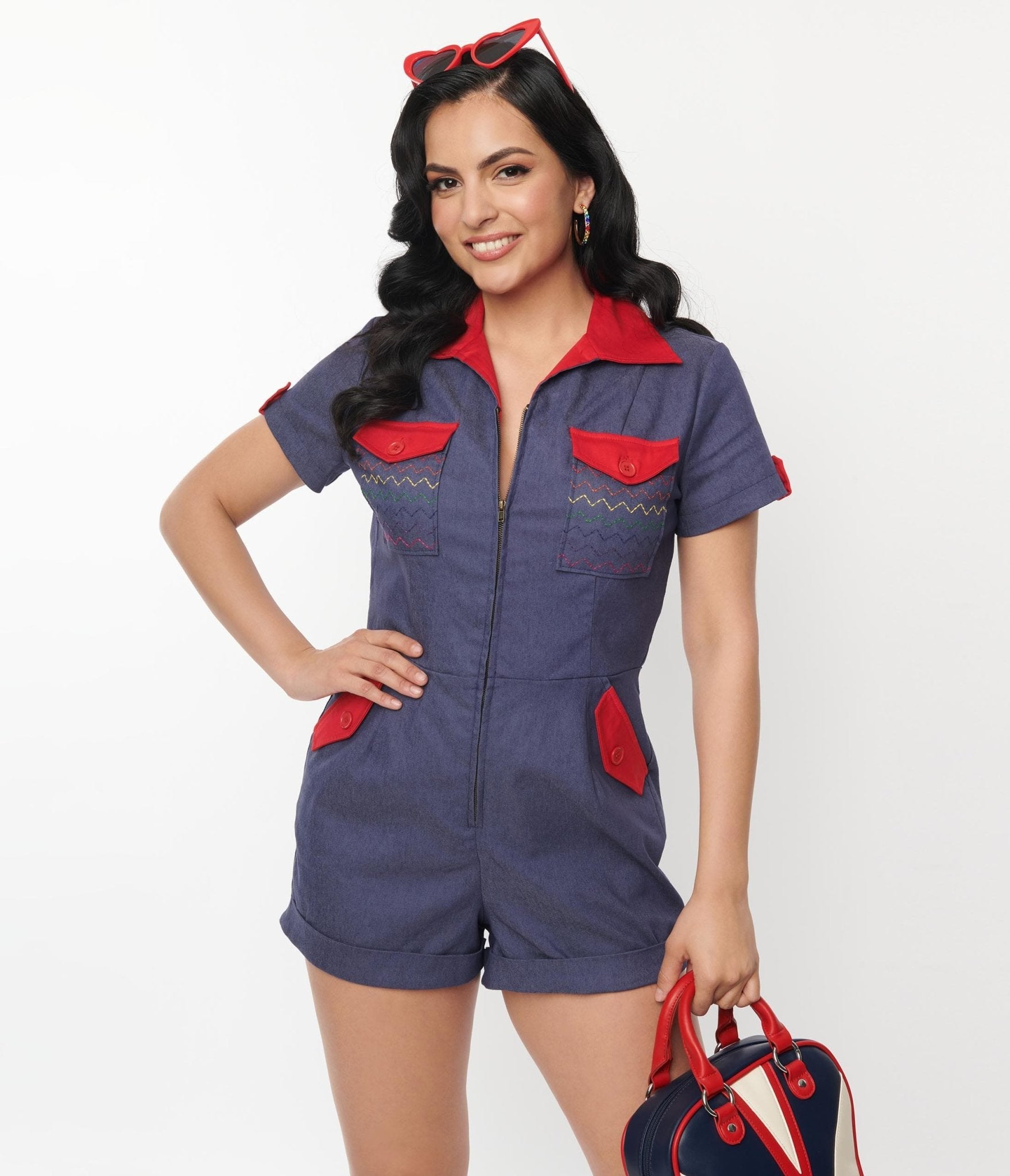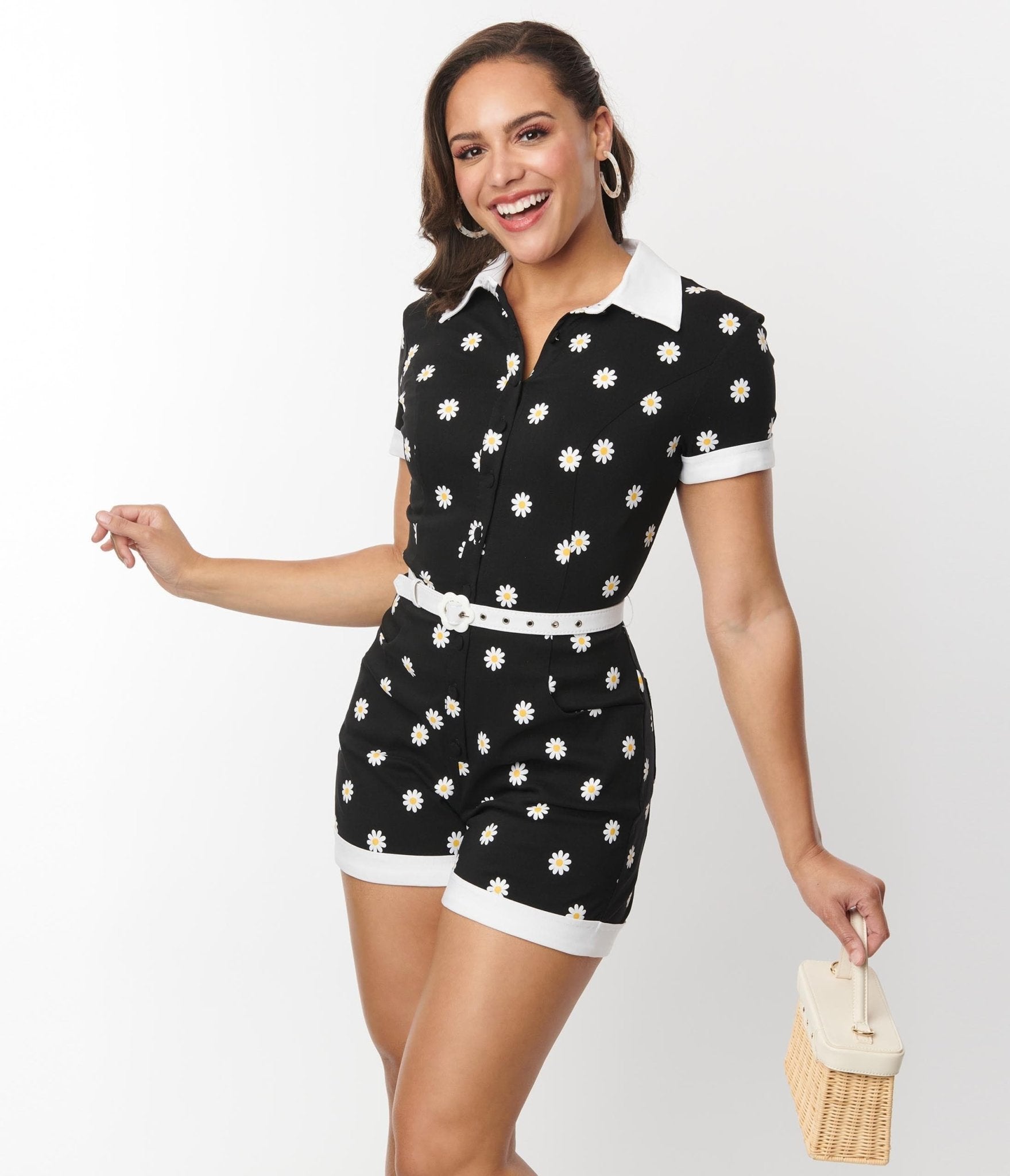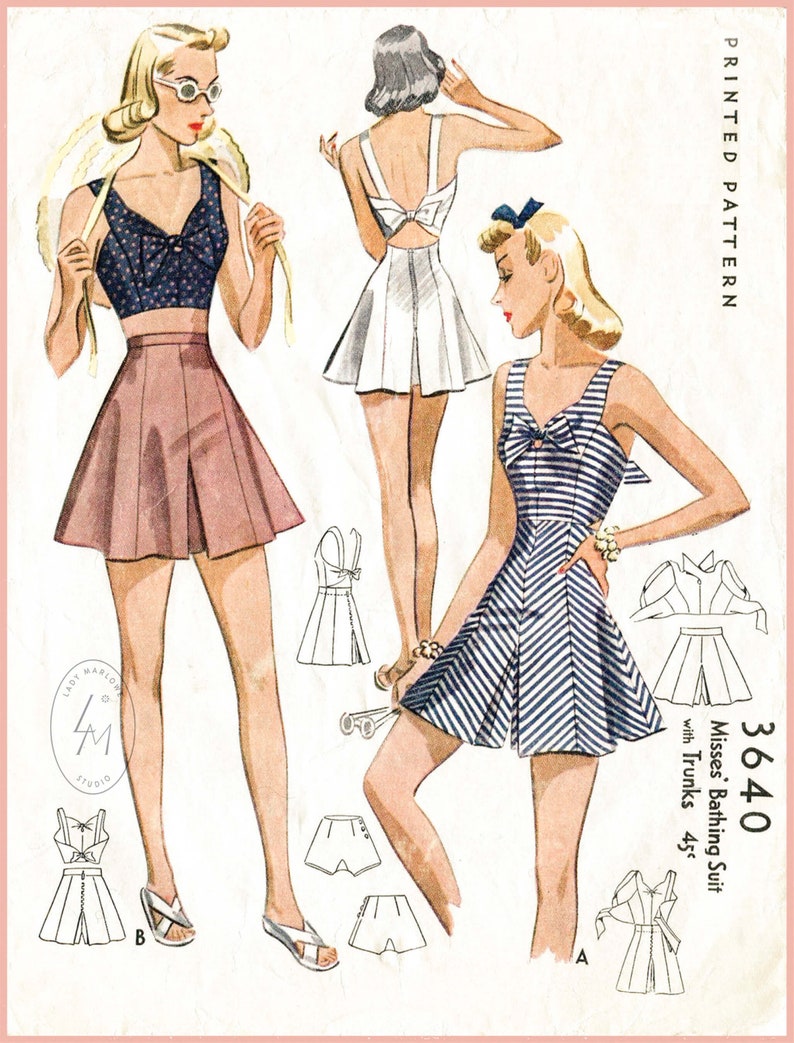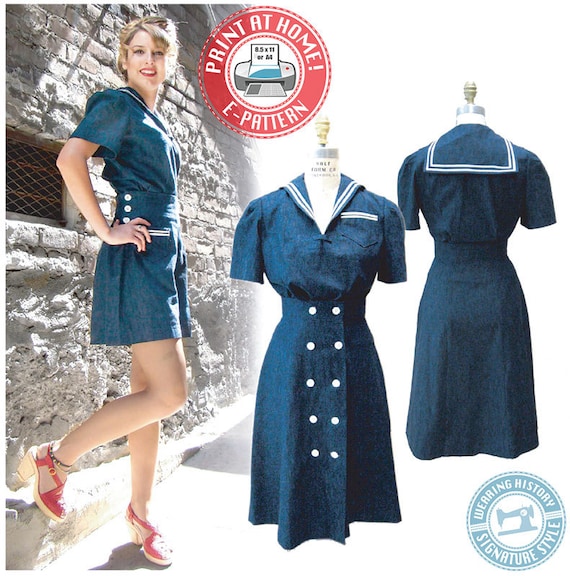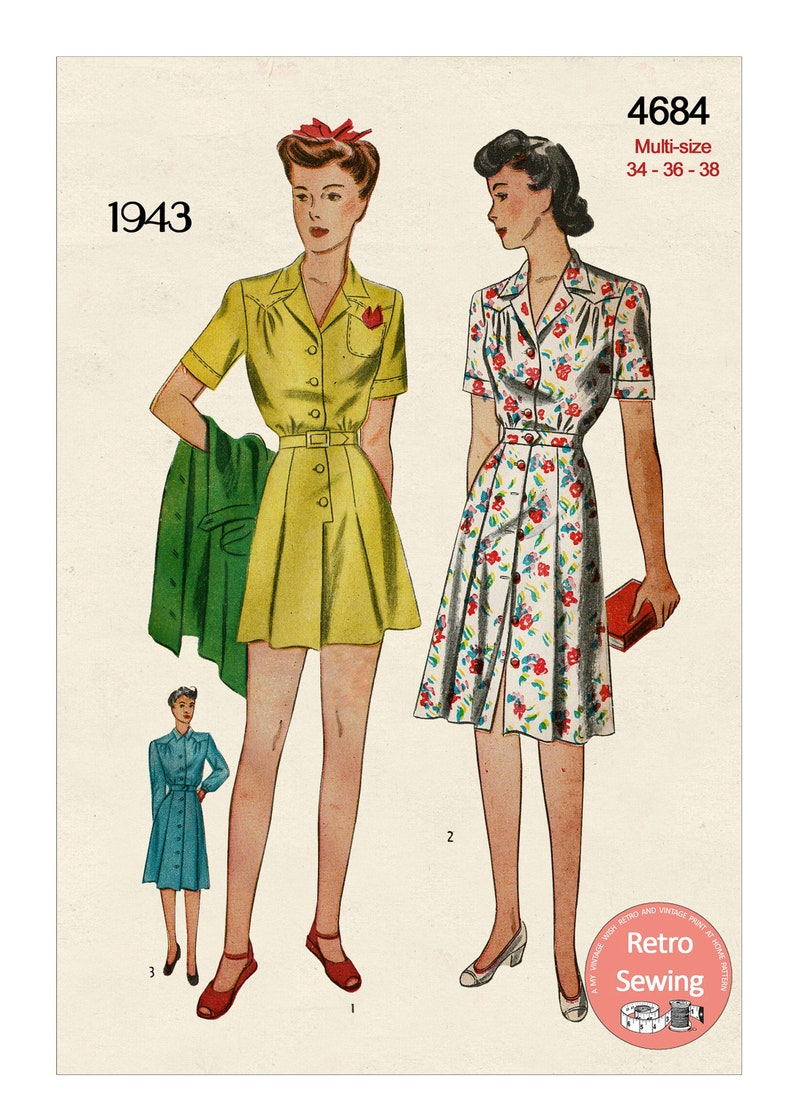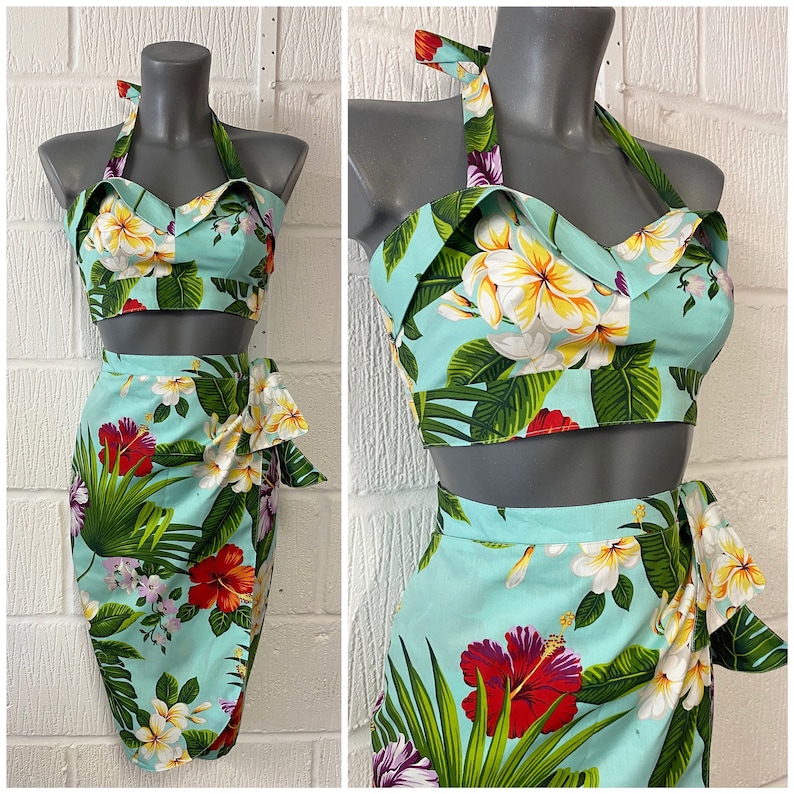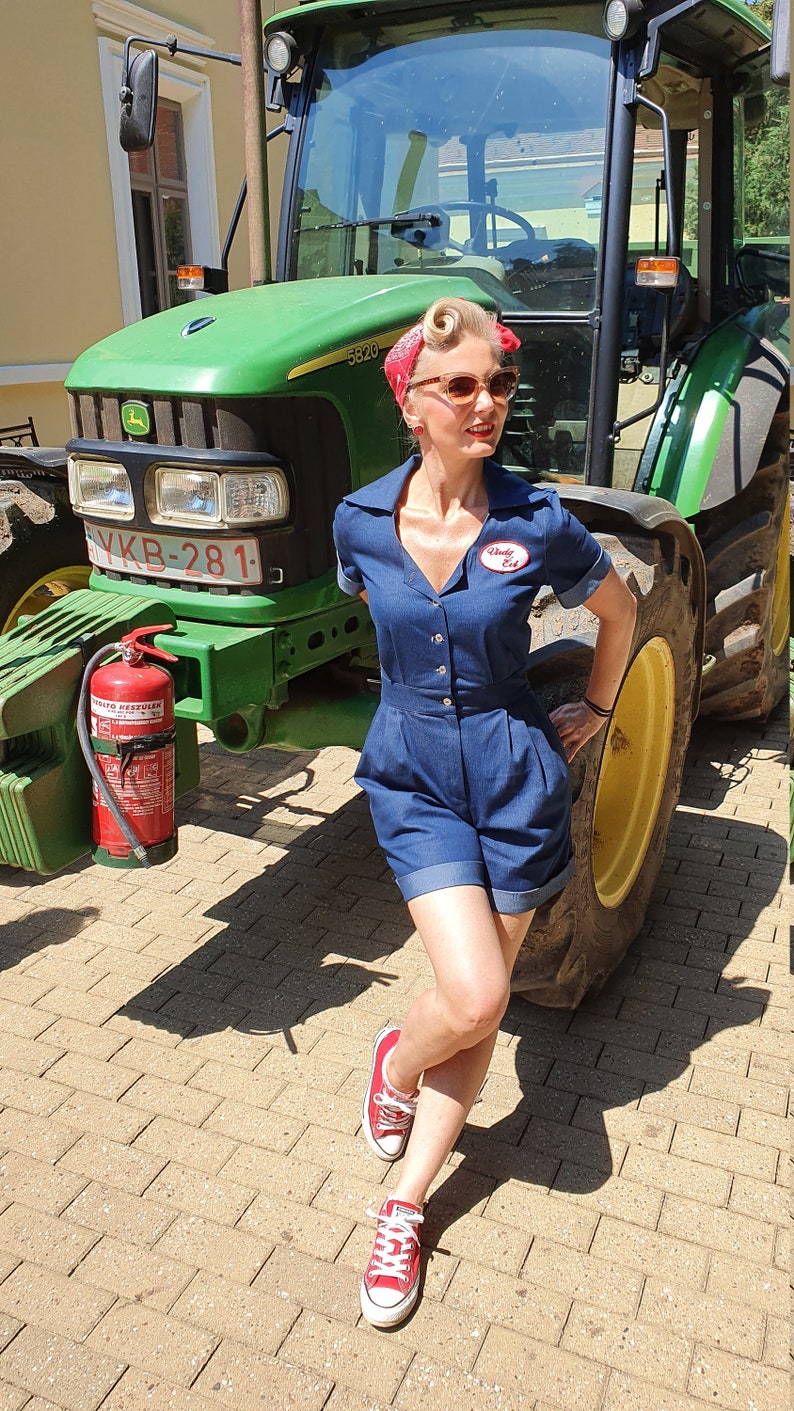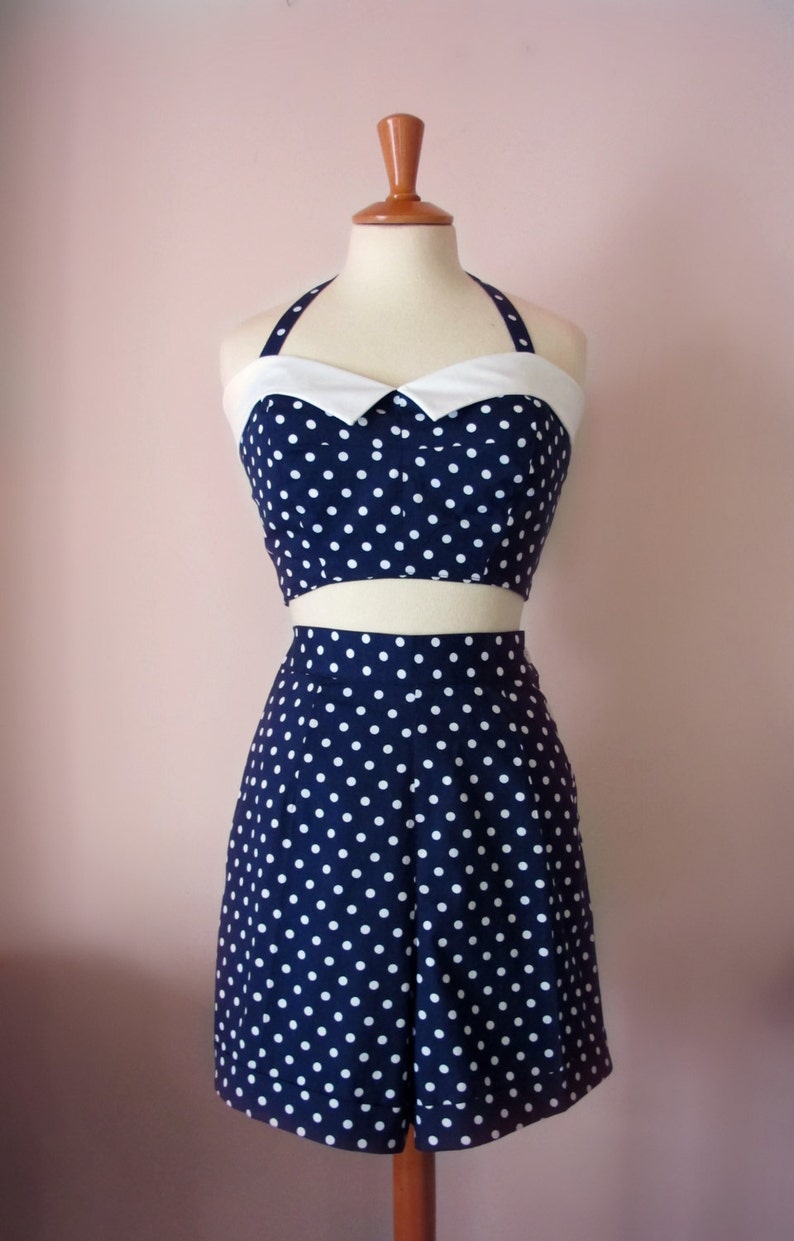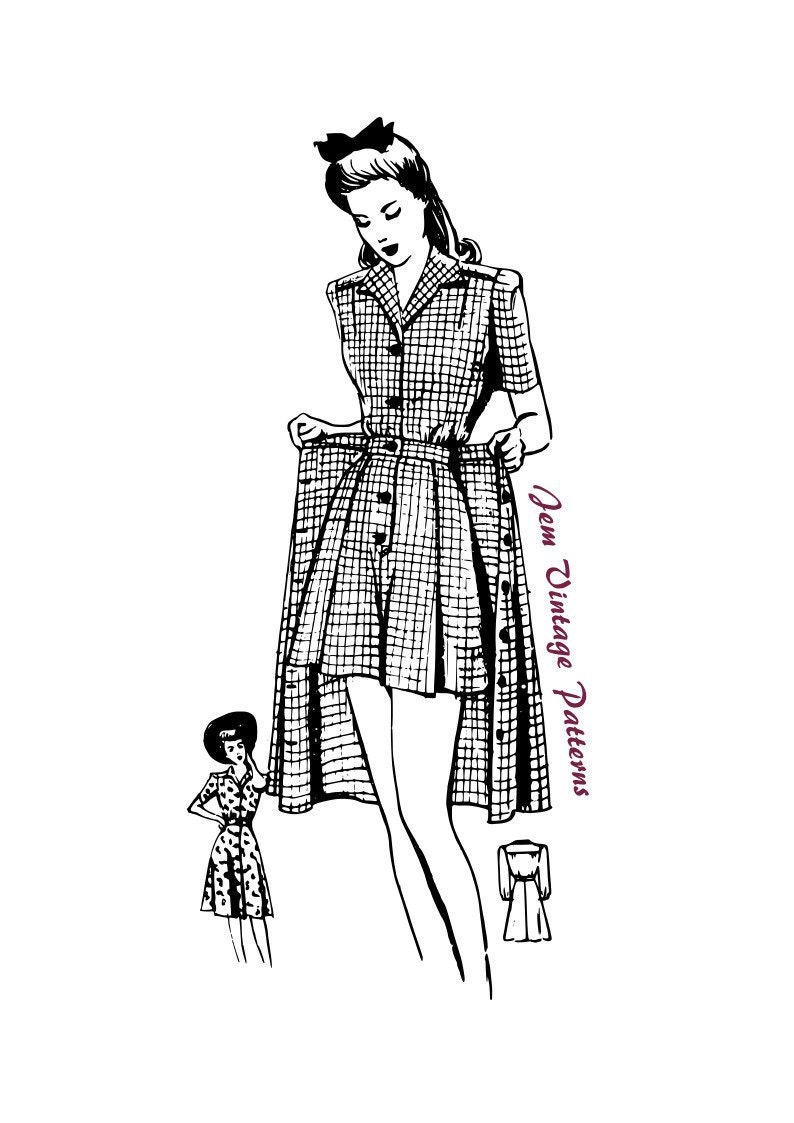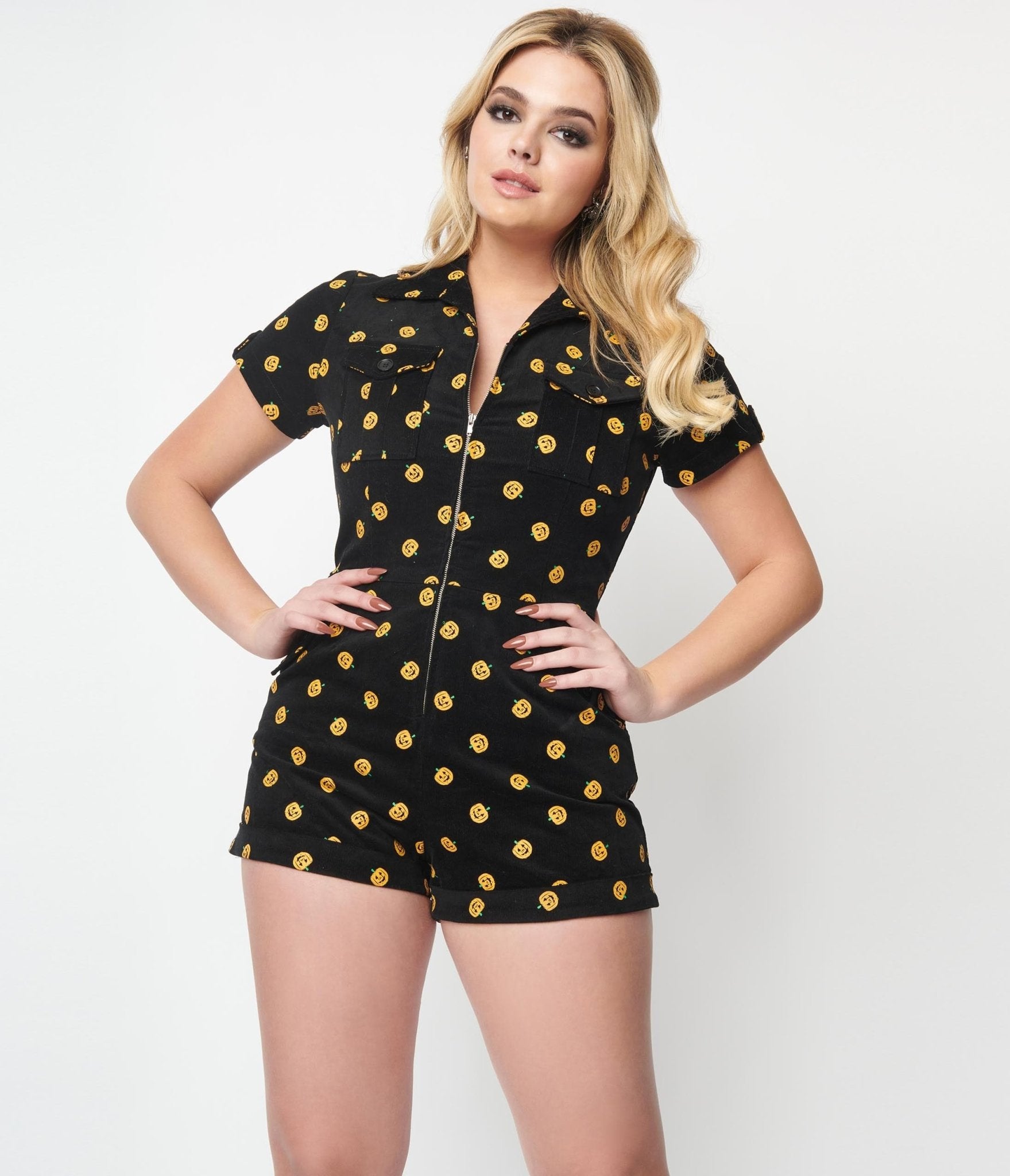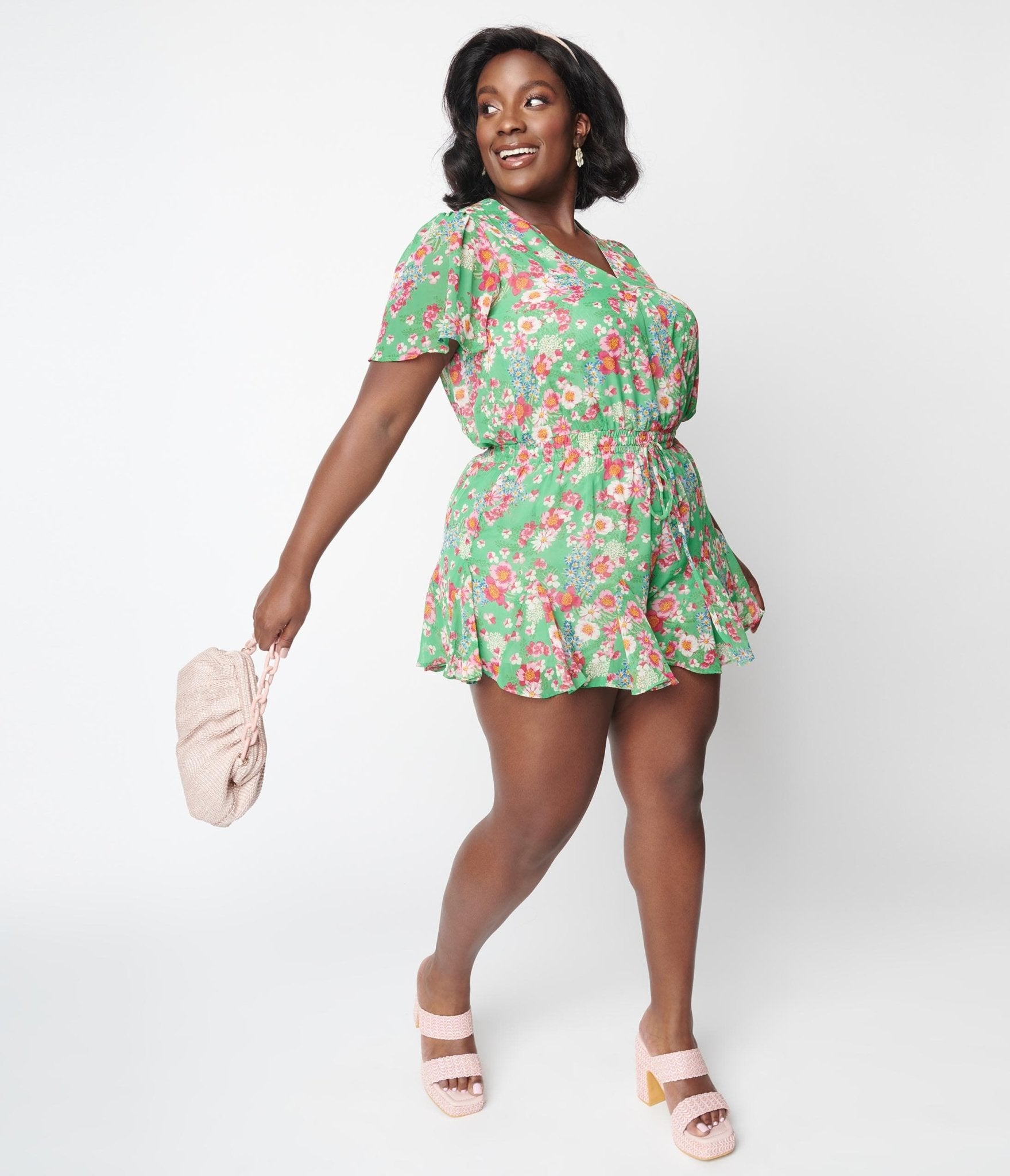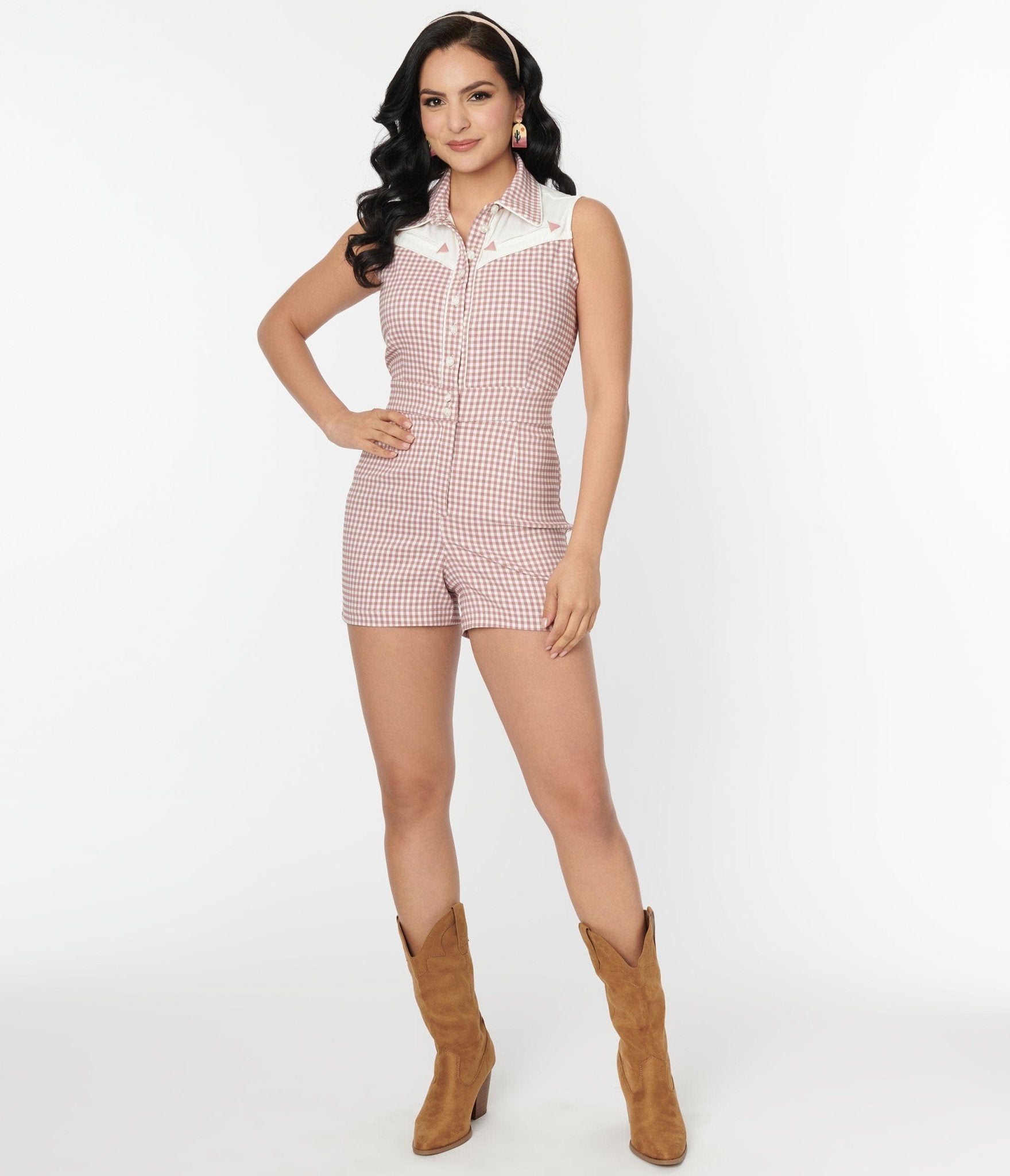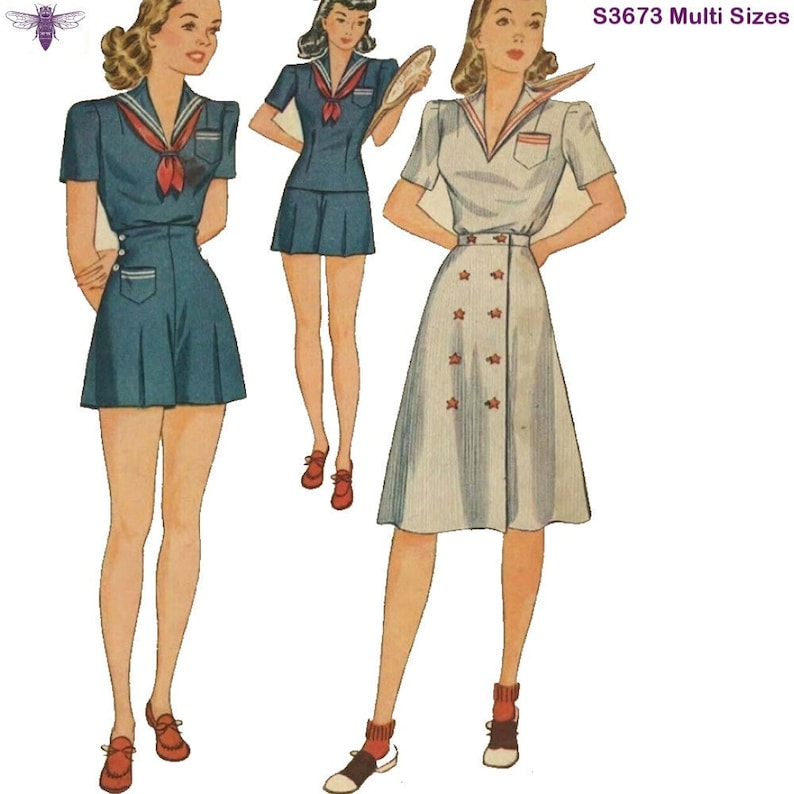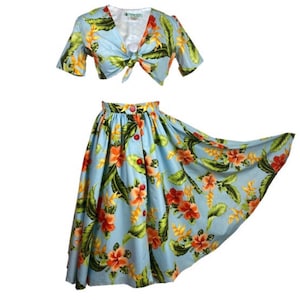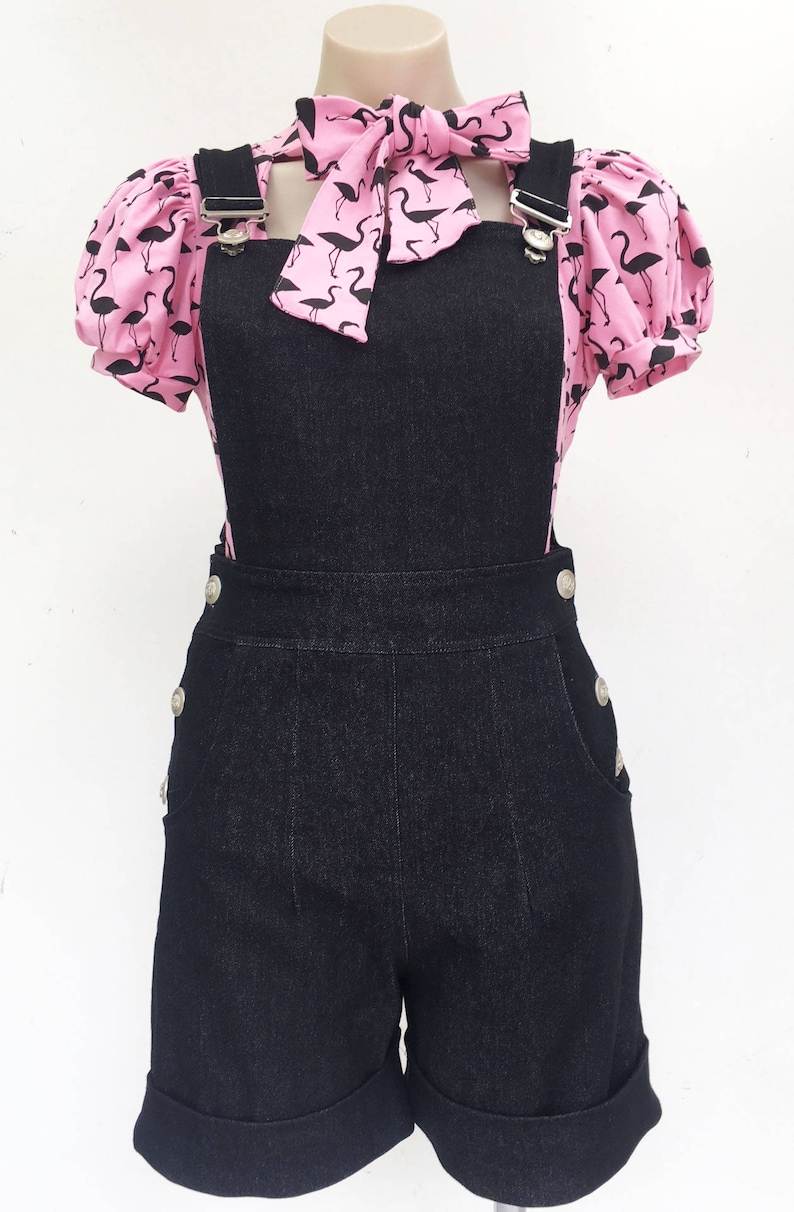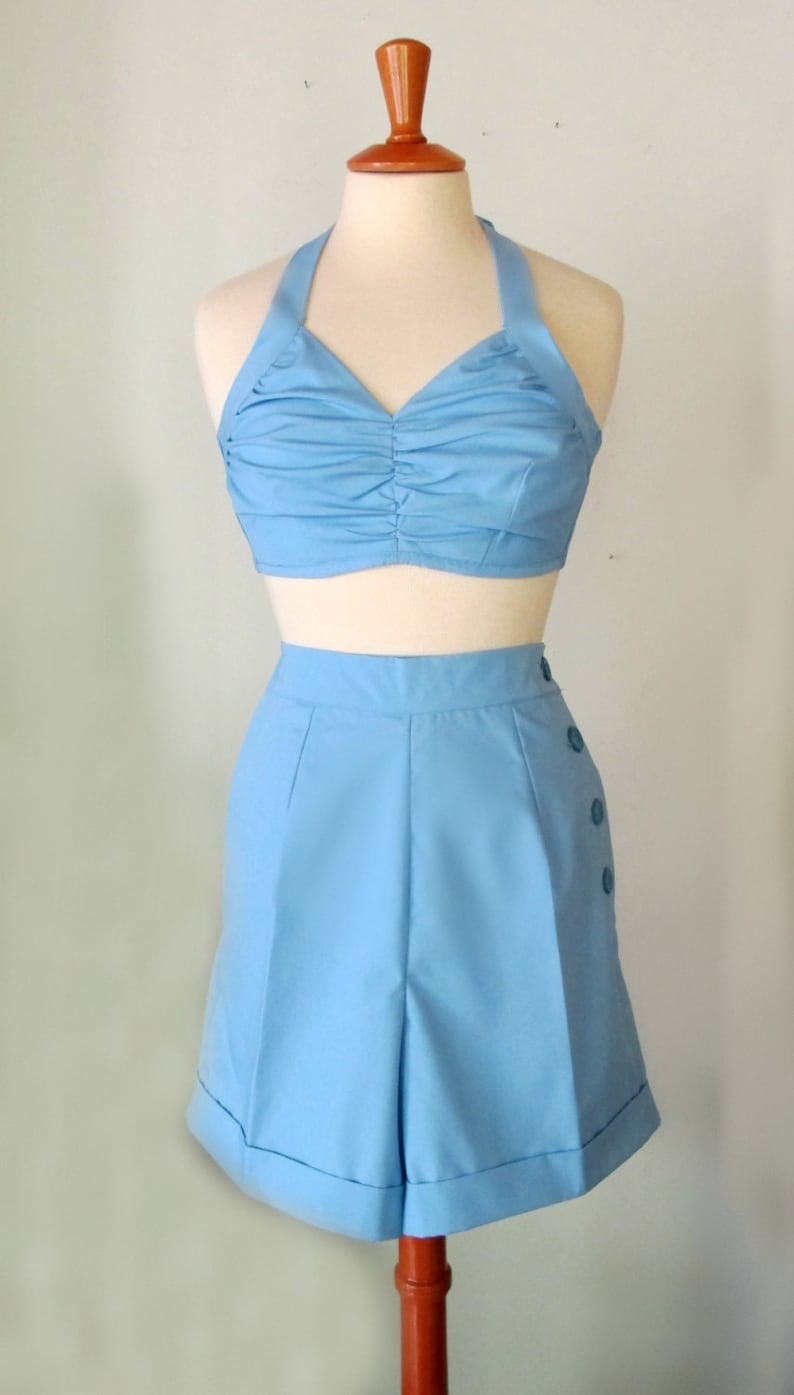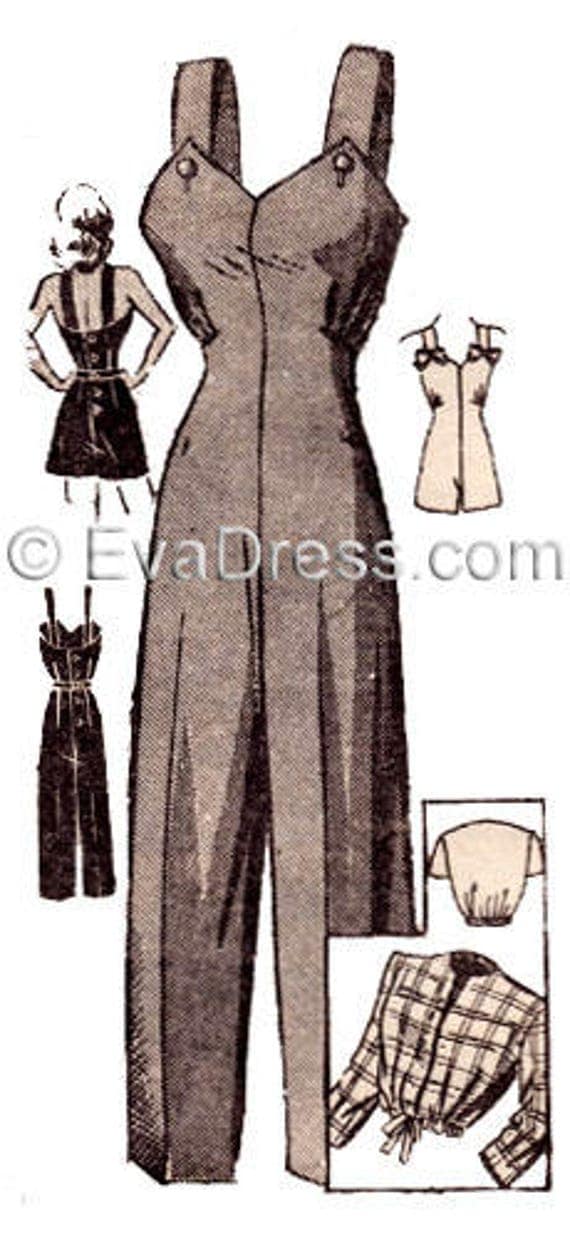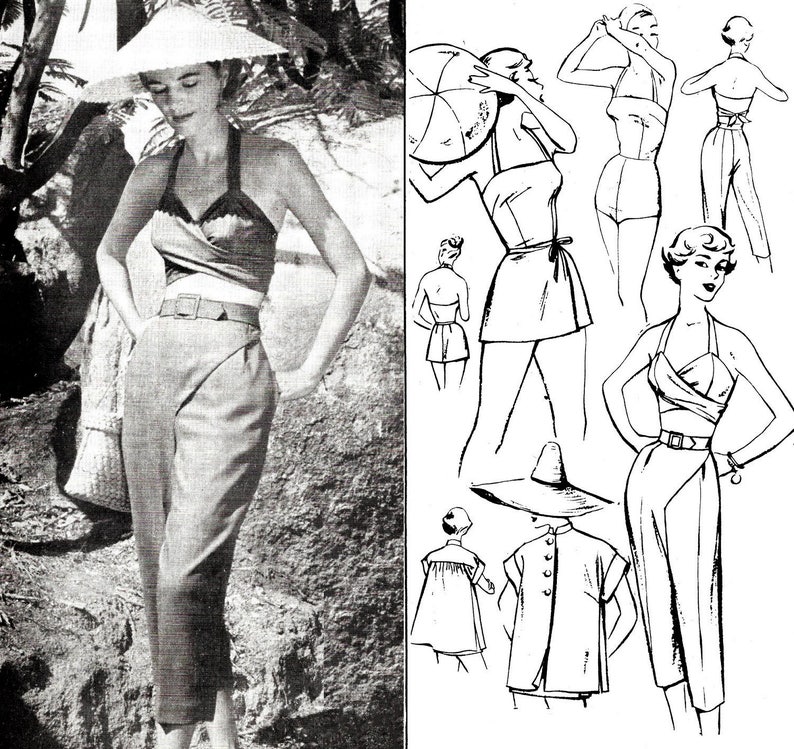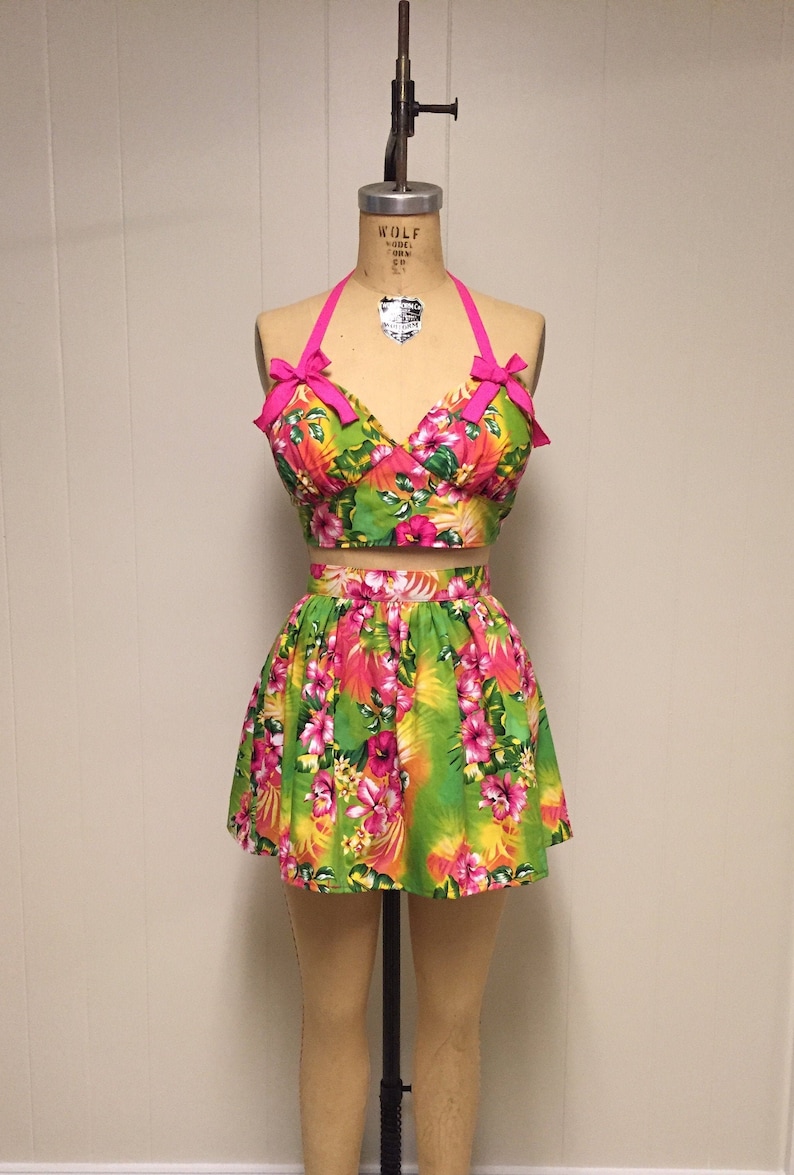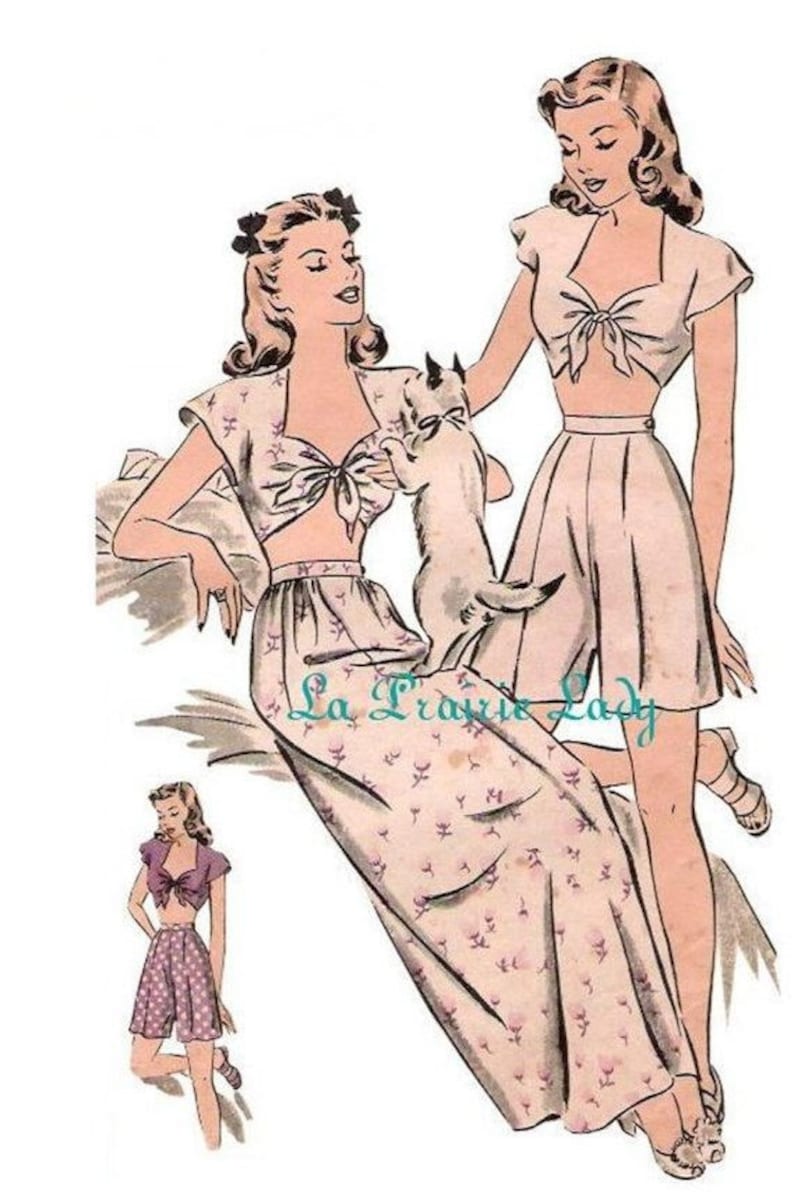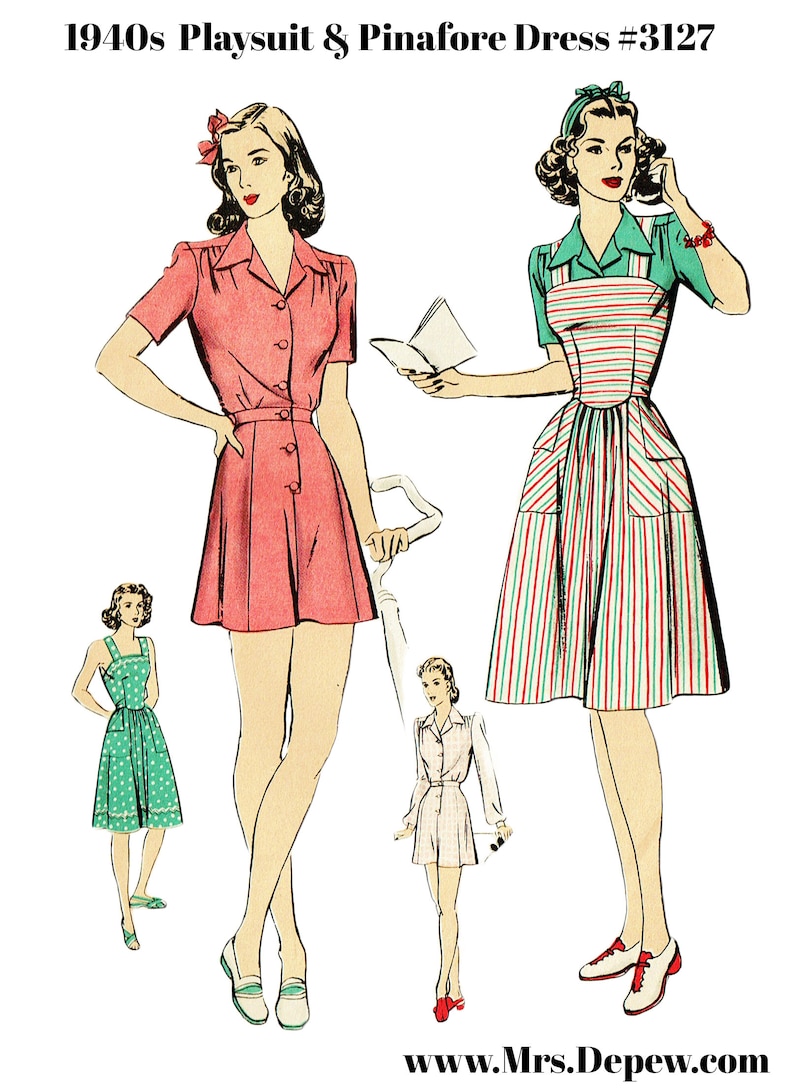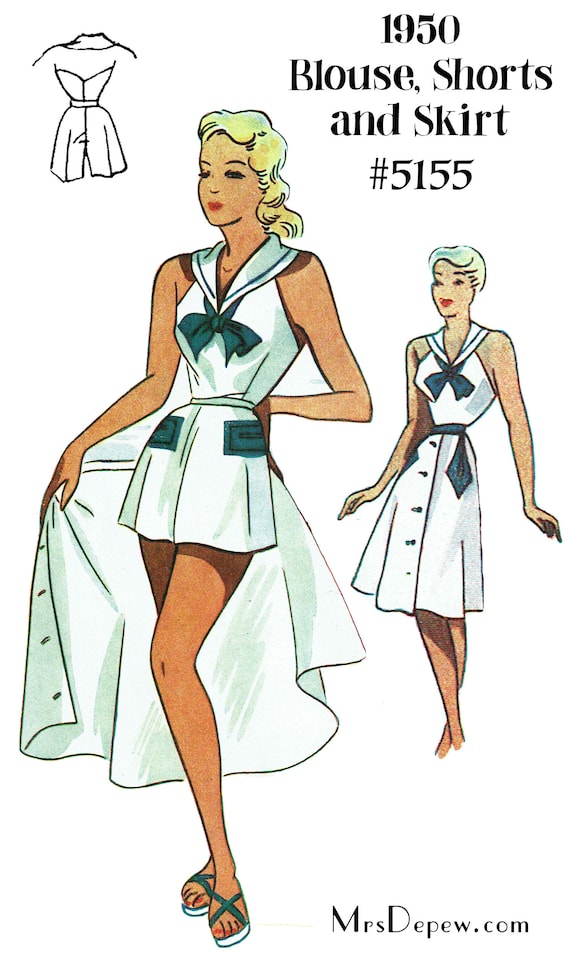“Play clothes” sound like something little kids would wear so they won’t get dirty, but teens and grown women during the 1940s wore what were actually called playsuits. Vintage playsuits (also called Rompers today) were worn outdoors – either at the beach, in the backyard to catch some sun, or for sportswear.
“Playclothes, though strictly for summertime… were one step away from bathing suits, just as demure and relentlessly perky. ” – What We Wore
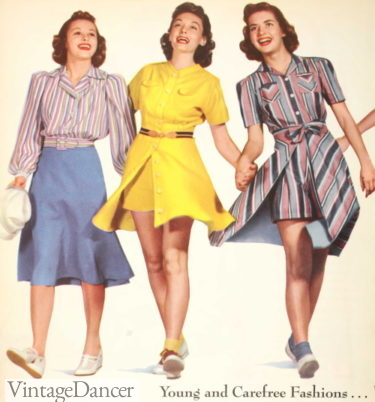
1940 Playsuits
Vintage playsuits were usually made of cotton, although they could also be found in rayon. They were brightly colored with reds, greens, yellows, and blues, and were often done in patterns, checks, and plaids. Floral and Hawaiian prints were popular towards the end of the decade and into the ’50s. The 1940s and 1950s playsuit consisted of two to three pieces with a few different variations and names.
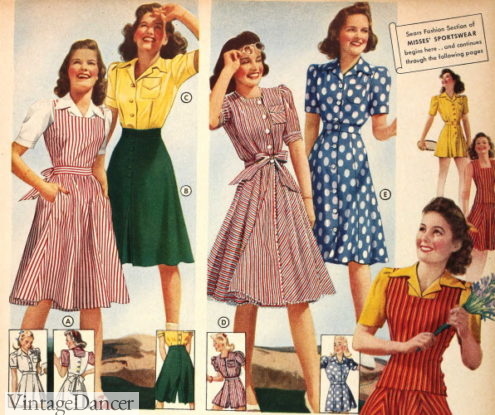
1941 Playsuits and Summer Dresses
Vintage Rompers
The main style of playsuit was the one-piece romper. The top resembled a button-down blouse that would come in at the waist and extend into shorts. A waistband often defined the waist and separated top from bottom.
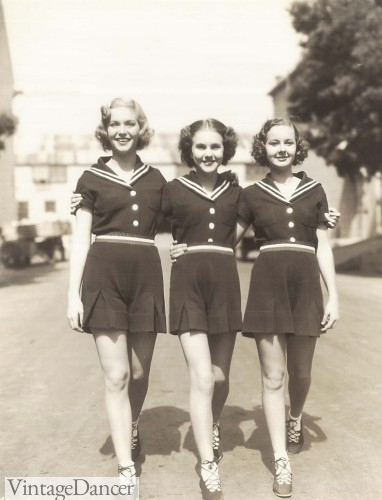
NanGrey, Deanna Durbin and Barbara Read in Sailor Inspired Playsuits
The shorts would fit similarly to the pants of the day – tight at the waist with a loose and wide leg, with a pleat or two. The shorts came to about mid-thigh, also wide legged. Some shorts were pleated all the way around so they looked like tennis skirts. Buttons would sometimes extend down the front of the shorts, although these were often decorative rather than functional. They gave a nautical look, which was popular in the 1930s and remained popular through the 1950s. Functional buttons were on the side or back by the late 1940s.
- 1940 Romper and Overskirt
- 1948 Two Piece and One Piece Romper
One unique style of romper shorts was the “bloomer” fit. They looked like Victorian bloomers (underwear). There were many small pleats at the waist to create volume, which was then gathered around the legs to create a puffy bottom. String ties or elastic made them adjustable to various waist and leg widths. The bloomer look was common in late 1940s swimsuits and 1950s swimsuits. The 1950s version was usually strapless with a boned corset type top and shorter bloomer bottoms. A swimsuit that came with a matching skirt could transition from pool to party without requiring a change of clothes.
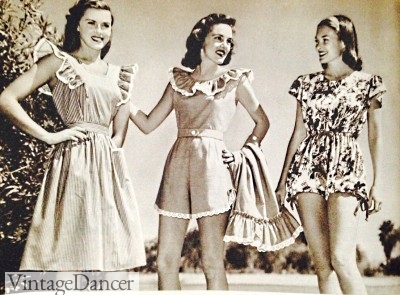
1947 Playsuits With and Without Skirts On, and a Bloomer Style (R)
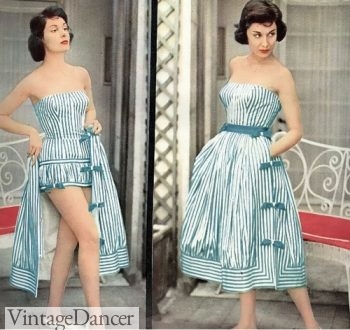
Striped Bloomer Playsuit in the 1950s
Shortalls paired with a blouse were another summertime 1940s and 1950s romper. Shortalls or shorty coveralls were short leg versions of sporty overalls and jumpsuits. Many were designed to be worn without a blouse, although a striped or solid color T-shirt was a favorite pairing. The straps were a button-on overall style, which was touted as being friendly to suntans.
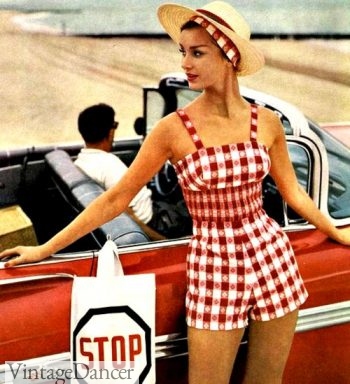
1959 Check Red Shortalls Playsuit
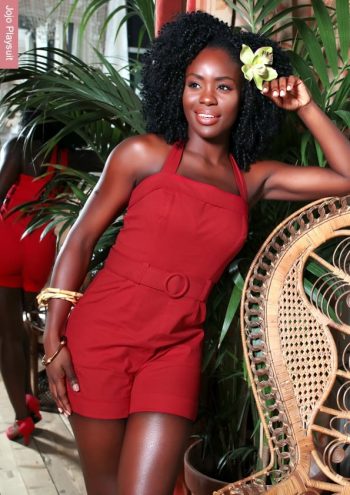
50s Playsuit with Tiki Accessories
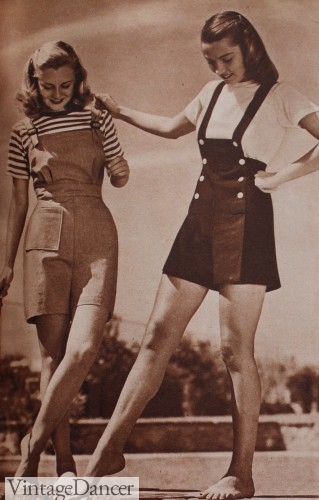
1944 Short Overalls and Jumper Playsuits
Vintage Playsuits with Skirts
Almost all playsuits came with a matching overskirt. It would be worn over the shorts to look like a dress, or it could be button-down like a shirtwaist dress skirt, but it was usually wraparound in a variety of styles. To go with the youthfulness of playwear, most skirts were dirndl style with large ruffles, pinafores with large pockets, or a simple A-line.
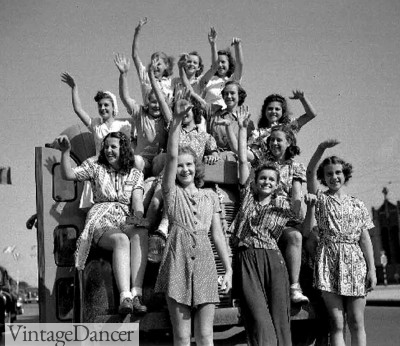
Young Women, All in Playsuits for a Trip to the Beach
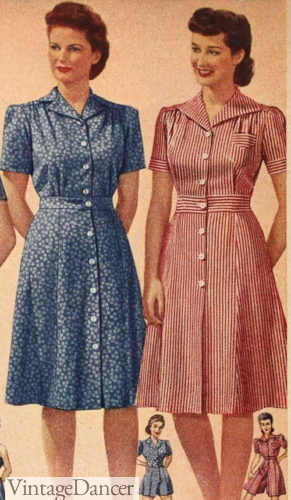
1942 Button Down Skirt Worn Over Playsuits
The skirt was usually longer than the shorts, between low thigh and above-knee length depending on the age and modesty level of the wearer. The removable skirt allowed women to wear the outfit out in public like a dress, but take it off for sports or beachwear. Shorts were still too revealing to be worn in public settings such as to the movies or to lunch with friends.
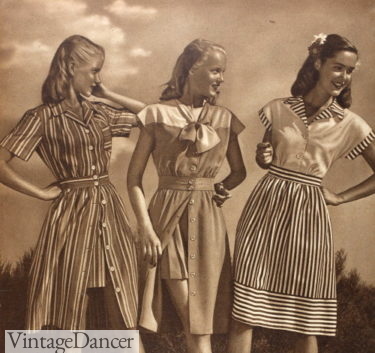
1945 Playsuit Skirt Sets
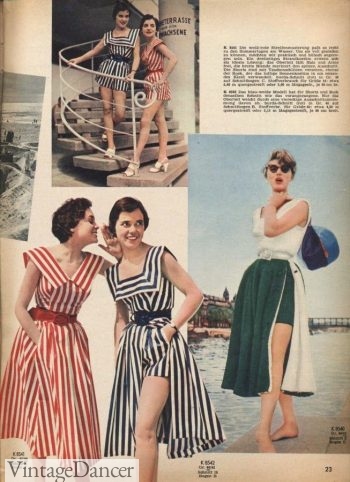
1955 Striped Playsuits and Skirts
Playsuit Jumpsuits
The 1940s jumper shortall had longer straps and a shorter bib front that required wearing a shirt underneath. Denim, twill, and heavy cotton were ideal fabrics for shortalls and jumper shorts. They resembled overalls more than playsuits, however by the ’50s, the true jumpsuit was in play.
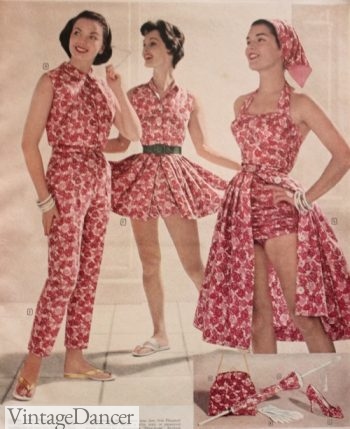
1958 Matching Jumpsuit, Playsuit, and Bathing Suit with Skirt and accessories
The 1950s jumpsuit was a one-piece knee length pant and top combination suit. They could have straps like playsuits or overalls, but the halter top and button down sleeveless shirt were also good options. Most jumpsuits were worn without a shirt underneath, however that was certainly an option. Jumpsuits usually had matching belts and side pockets, too. In this way, they resembled ’40s work clothes and Land Army uniforms – but now in a more stylish summer fashion.
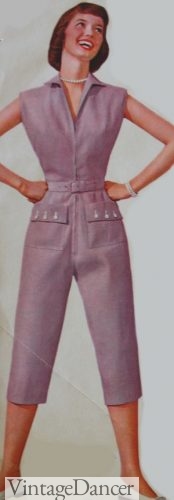
1953 Jumpsuit
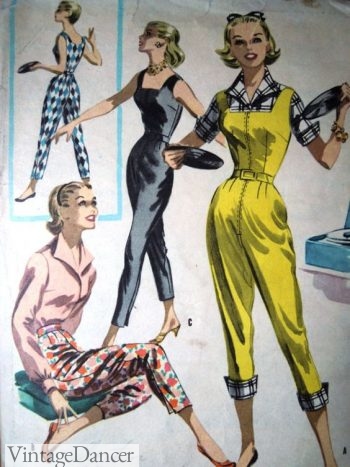
Jumpsuit with Belt and Contrast Cuffs in Plaid
Some pants and tops were sold as matching sets so that they looked like a jumpsuit. This made them much more convenient when visiting the restroom.
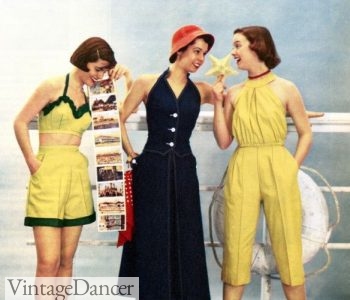
Playsuit (Two-piece), Playsuit Dress and Jumpsuit
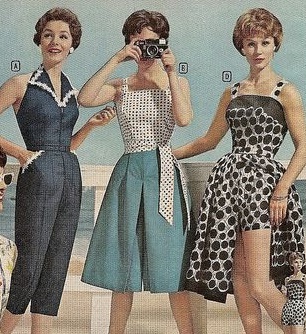
1959 Summer Jumpsuit and Playsuits with Skirts
Read More
- 1940s Women’s Pants History
- 1940s Bathing Suit Styles for Women
- 1950s Bathing Suit Styles for Women
- The History of the Shirtwaist Dress
- Vintage Summer Clothes and Beach Outfits
Where to Buy Retro Playsuits and Rompers
Rompers are back in fashion for another year. While they went out of fashion in the late 1950s, they came back revised but still in the one-piece style in the 1980s. The romper versions that are out today are mostly based on the looser styles of the 1980s. The 1940s fitted styles are harder to find, and most likely won’t have the cute matching skirt to wrap over it (darn!).
For a complete 3 piece vintage playsuit, you will likely need to sew your own.
I keep my eyes peeled for vintage and retro style playsuits and add them to the shop page here or below:
